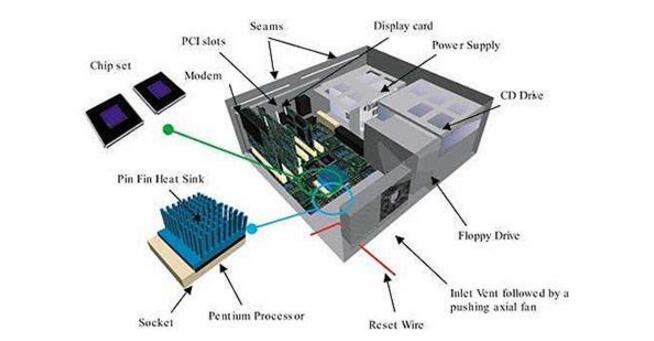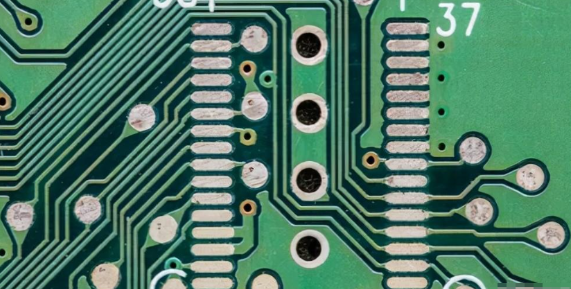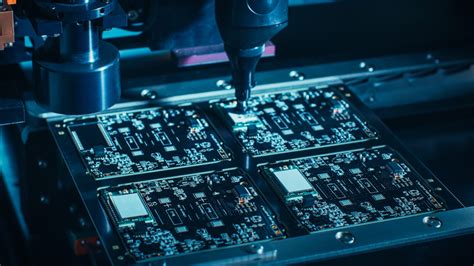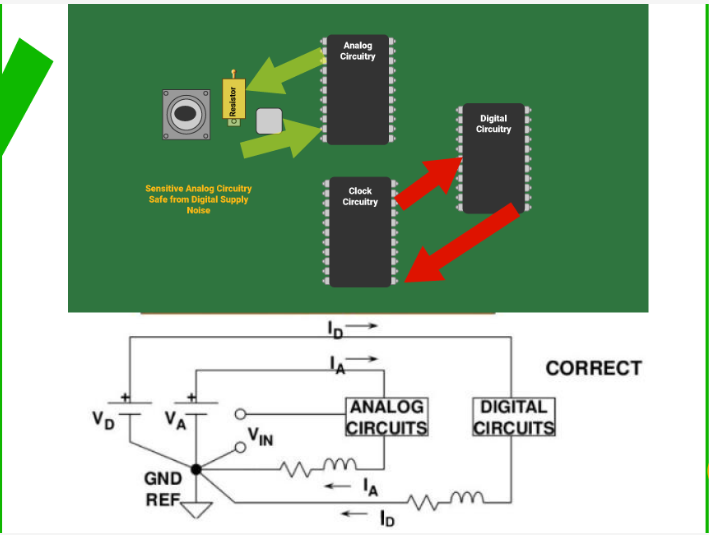Aluminum oxide pcb
Advantages Of Using Aluminum Oxide PCB In Electronics
Aluminum oxide printed circuit boards (PCBs) have emerged as a significant advancement in the field of electronics, offering a range of advantages that make them highly desirable for various applications. One of the primary benefits of using aluminum oxide PCBs is their exceptional thermal conductivity.
This property is crucial in electronic devices where heat dissipation is a major concern.
By efficiently transferring heat away from critical components, aluminum oxide PCBs help in maintaining optimal operating temperatures, thereby enhancing the reliability and longevity of electronic devices.
In addition to thermal management, aluminum oxide PCBs are known for their excellent electrical insulation properties.
This characteristic is particularly important in high-frequency applications where signal integrity is paramount. The high dielectric strength of aluminum oxide ensures minimal signal loss and interference, leading to improved performance and efficiency of electronic circuits. Furthermore, the material’s inherent resistance to electrical breakdown makes it a reliable choice for applications that demand high voltage endurance.
Another notable advantage of aluminum oxide PCBs is their mechanical robustness.
The material’s high hardness and strength make it resistant to wear and tear, which is essential for devices subjected to harsh environmental conditions. This durability translates to a longer lifespan for electronic products, reducing the need for frequent replacements and thereby contributing to cost savings over time.
Moreover, the rigidity of aluminum oxide PCBs provides structural stability, which is beneficial in applications requiring precise and stable mounting of components.
The chemical stability of aluminum oxide is another factor that adds to its appeal in the electronics industry.
The material is highly resistant to corrosion and chemical reactions, ensuring that the PCBs remain intact and functional even in chemically aggressive environments. This resistance to degradation is particularly advantageous in industrial and automotive applications where exposure to harsh chemicals and extreme conditions is common.
Furthermore, aluminum oxide PCBs offer significant advantages in terms of miniaturization and design flexibility.
The material’s ability to support fine line widths and tight tolerances allows for the creation of compact and complex circuit designs. This capability is essential in modern electronics, where there is a constant push towards smaller, more powerful devices. The use of aluminum oxide PCBs enables designers to pack more functionality into a smaller footprint, meeting the demands of contemporary electronic products.
In addition to these technical benefits, aluminum oxide PCBs also contribute to environmental sustainability. The material is non-toxic and can be recycled, aligning with the growing emphasis on eco-friendly manufacturing practices. By choosing aluminum oxide PCBs, manufacturers can reduce their environmental impact and promote sustainable development in the electronics industry.
Moreover, the cost-effectiveness of aluminum oxide PCBs cannot be overlooked. While the initial material cost may be higher compared to traditional PCB materials, the long-term benefits such as enhanced performance, durability, and reduced maintenance costs make it a financially viable option. The overall value proposition of aluminum oxide PCBs makes them an attractive choice for a wide range of electronic applications.
In conclusion, the advantages of using aluminum oxide PCBs in electronics are manifold. From superior thermal management and electrical insulation to mechanical robustness and chemical stability, these PCBs offer a comprehensive solution for modern electronic devices. Their contribution to miniaturization, environmental sustainability, and cost-effectiveness further underscores their significance in the industry. As technology continues to evolve, the adoption of aluminum oxide PCBs is likely to increase, driving innovation and efficiency in electronic design and manufacturing.
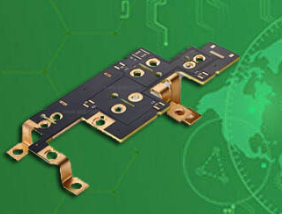
Manufacturing Process Of Aluminum Oxide PCBs
The manufacturing process of aluminum oxide PCBs, also known as Al2O3 PCBs, involves a series of meticulously controlled steps to ensure the production of high-quality, reliable circuit boards. Initially, the process begins with the selection of the aluminum oxide substrate, which is chosen for its excellent thermal conductivity, electrical insulation properties, and mechanical strength. This substrate serves as the foundation upon which the entire PCB will be built.
Following the selection of the substrate, the next step involves the preparation of the aluminum oxide surface.
This is achieved through a series of cleaning and etching processes designed to remove any impurities and create a roughened surface that enhances the adhesion of subsequent layers. The substrate is typically cleaned using chemical solutions that dissolve contaminants, followed by a thorough rinsing with deionized water to ensure no residues remain.
Once the substrate is prepared, a thin layer of conductive material, usually copper, is deposited onto the surface.
This is commonly done through a process known as sputtering or electroplating. Sputtering involves bombarding the substrate with high-energy particles to deposit a uniform layer of copper, while electroplating uses an electric current to reduce copper ions onto the substrate. Both methods ensure a strong bond between the copper and the aluminum oxide, which is crucial for the durability and performance of the PCB.
After the copper layer is applied, the next phase involves the application of a photoresist material.
This light-sensitive material is coated onto the copper surface and then exposed to ultraviolet (UV) light through a photomask that contains the desired circuit pattern. The areas of the photoresist exposed to UV light harden, while the unexposed areas remain soft and can be washed away using a developer solution. This process effectively transfers the circuit pattern onto the copper layer.
Subsequently, the exposed copper areas are etched away using a chemical etchant, leaving behind the desired circuit traces. The remaining photoresist is then stripped away, revealing the copper circuit pattern on the aluminum oxide substrate. At this stage, the PCB begins to take shape, but additional steps are required to complete the manufacturing process.
To protect the copper traces and enhance the PCB’s durability, a solder mask is applied.
This insulating layer covers the entire surface except for the areas where components will be soldered. The solder mask not only prevents short circuits but also provides a barrier against environmental factors such as moisture and dust. The application of the solder mask is followed by a curing process, typically involving exposure to UV light or heat.
The final steps in the manufacturing process include the application of surface finishes and the drilling of holes for component placement.
Surface finishes, such as gold or silver plating, are applied to the exposed copper pads to improve solderability and protect against oxidation. Drilling is performed using precision machinery to create holes for through-hole components and vias, which are essential for establishing electrical connections between different layers of the PCB.
In conclusion, the manufacturing process of aluminum oxide PCBs is a complex and highly controlled series of steps that ensure the production of reliable and high-performance circuit boards. From substrate preparation to the final application of surface finishes, each stage is critical in achieving the desired electrical and mechanical properties. The use of aluminum oxide as a substrate material offers significant advantages, making these PCBs ideal for applications requiring excellent thermal management and electrical insulation.
Thermal Management Benefits Of Aluminum Oxide PCBs
Aluminum oxide PCBs, also known as alumina PCBs, have garnered significant attention in the electronics industry due to their exceptional thermal management properties. As electronic devices continue to become more compact and powerful, the need for efficient heat dissipation has never been more critical.
Aluminum oxide, with its unique thermal characteristics, offers a compelling solution to this challenge, ensuring the longevity and reliability of electronic components.
One of the primary thermal management benefits of aluminum oxide PCBs is their high thermal conductivity.
Aluminum oxide has a thermal conductivity of approximately 30 W/mK, which is significantly higher than that of traditional FR4 materials used in standard PCBs. This high thermal conductivity allows for rapid heat transfer away from heat-generating components, thereby reducing the risk of overheating and subsequent failure. Consequently, devices that incorporate aluminum oxide PCBs can operate at higher power levels and for extended periods without compromising performance.
In addition to its high thermal conductivity, aluminum oxide also boasts excellent thermal stability.
This material can withstand high temperatures without degrading, making it ideal for applications that involve extreme thermal cycling. For instance, in automotive electronics, where components are frequently exposed to fluctuating temperatures, aluminum oxide PCBs ensure consistent performance and durability. This thermal stability also translates to improved reliability in aerospace and military applications, where electronic systems must endure harsh environmental conditions.
Moreover, aluminum oxide PCBs exhibit superior thermal expansion properties.
The coefficient of thermal expansion (CTE) of aluminum oxide is closely matched to that of silicon, the primary material used in semiconductor devices. This compatibility minimizes the mechanical stress that occurs due to thermal expansion and contraction, thereby reducing the likelihood of component failure.
As a result, aluminum oxide PCBs are particularly advantageous in high-precision applications, such as medical devices and advanced computing systems, where even minor thermal-induced stresses can lead to significant performance issues.
Furthermore, the use of aluminum oxide PCBs contributes to enhanced thermal management through improved heat spreading.
The material’s inherent properties allow for uniform heat distribution across the PCB, preventing localized hotspots that can damage sensitive components. This uniform heat spreading capability is especially beneficial in high-density electronic assemblies, where space constraints necessitate the close placement of heat-generating elements. By mitigating the risk of thermal hotspots, aluminum oxide PCBs help maintain the integrity and functionality of densely packed electronic circuits.
In addition to these thermal management benefits, aluminum oxide PCBs also offer other advantages that indirectly contribute to better thermal performance. For example, aluminum oxide is a robust and durable material, providing excellent mechanical strength and resistance to wear and corrosion.
durability ensures that the PCB maintains its thermal management properties over an extended lifespan, even in demanding operational environments. Additionally, aluminum oxide’s electrical insulation properties prevent short circuits and electrical interference, further safeguarding the electronic components and enhancing overall system reliability.
In conclusion, the thermal management benefits of aluminum oxide PCBs make them an invaluable asset in the design and manufacture of modern electronic devices. Their high thermal conductivity, excellent thermal stability, compatible thermal expansion properties, and superior heat spreading capabilities collectively ensure efficient heat dissipation and reliable performance. As the demand for more powerful and compact electronic systems continues to grow, the adoption of aluminum oxide PCBs is likely to become increasingly prevalent, driving advancements in thermal management and contributing to the development of more robust and efficient electronic technologies.
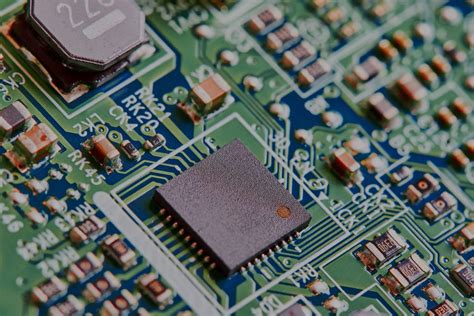
Applications Of Aluminum Oxide PCBs In Modern Technology
Aluminum oxide PCBs, also known as alumina PCBs, have become increasingly significant in modern technology due to their unique properties and versatile applications. These printed circuit boards are distinguished by their use of aluminum oxide as a substrate material, which offers several advantages over traditional materials like FR4. The inherent thermal conductivity, electrical insulation, and mechanical strength of aluminum oxide make it an ideal choice for various high-performance applications.
One of the primary applications of aluminum oxide PCBs is in the field of LED lighting. The high thermal conductivity of aluminum oxide allows for efficient heat dissipation, which is crucial for maintaining the longevity and performance of LEDs.
As LEDs generate significant heat during operation, the ability to effectively manage this heat is essential to prevent damage and ensure consistent light output. Consequently, aluminum oxide PCBs are widely used in LED modules, street lighting, automotive lighting, and other high-intensity lighting solutions.
In addition to LED lighting, aluminum oxide PCBs are extensively utilized in power electronics.
The robust thermal management capabilities of aluminum oxide substrates are particularly beneficial in power converters, inverters, and motor drives, where high power densities and elevated temperatures are common. By efficiently dissipating heat, aluminum oxide PCBs help to enhance the reliability and efficiency of these power electronic devices, thereby contributing to their overall performance and longevity.
Moreover, the medical industry has also recognized the advantages of aluminum oxide PCBs.
Medical devices often require high precision, reliability, and the ability to operate under stringent conditions. Aluminum oxide PCBs meet these requirements by providing excellent electrical insulation and mechanical stability. They are used in various medical applications, including diagnostic equipment, imaging systems, and implantable devices. The biocompatibility of aluminum oxide further enhances its suitability for medical applications, ensuring that it does not cause adverse reactions when in contact with biological tissues.
Furthermore, the telecommunications sector benefits from the use of aluminum oxide PCBs.
With the increasing demand for high-speed data transmission and the proliferation of wireless communication technologies, the need for reliable and efficient electronic components has never been greater. Aluminum oxide PCBs offer superior signal integrity and thermal management, making them ideal for use in high-frequency circuits, antennas, and RF modules. These properties help to minimize signal loss and interference, thereby improving the overall performance of telecommunications equipment.
Additionally, the aerospace and defense industries have adopted aluminum oxide PCBs for their critical applications.
The harsh operating environments and stringent performance requirements in these sectors necessitate the use of materials that can withstand extreme temperatures, mechanical stress, and radiation. Aluminum oxide PCBs provide the necessary durability and reliability, making them suitable for use in avionics, radar systems, satellite communications, and other aerospace and defense applications.
In conclusion, the applications of aluminum oxide PCBs in modern technology are diverse and far-reaching. Their exceptional thermal conductivity, electrical insulation, and mechanical strength make them indispensable in various high-performance applications, including LED lighting, power electronics, medical devices, telecommunications, and aerospace and defense. As technology continues to advance, the demand for reliable and efficient electronic components will only grow, further solidifying the importance of aluminum oxide PCBs in the ever-evolving landscape of modern technology.



